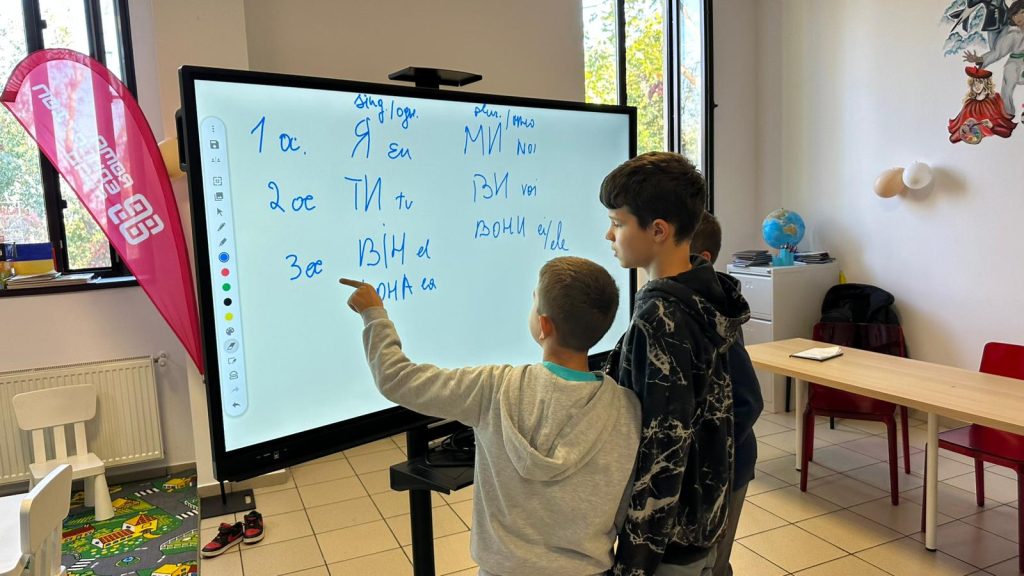They Don’t See Us Yet | Roma Children at the Edge of Europe’s Digital Future
An editorial signed by Stanislav Daniel, team leader for Complementary Education Centres (CECs)
Eighteen years ago, on 13 November 2007, the European Court of Human Rights declared that Roma children in the Czech Republic had been systematically placed in inferior schools. D.H. and Others v. Czech Republic was supposed to mark a turning point, the moment Europe finally saw what it had long chosen to ignore. The Court called it discrimination. For a while, it felt like the wall between “them” and “us” had cracked.
After D.H., governments promised integration plans, inclusive testing, better teacher training. Authorities focused heavily on the ethnic mix in the classroom, often ignoring ethnic composition of the town or the demographics of the village. Today, 18 years after the court ruling, Roma children across Europe are still overrepresented in special schools or segregated classrooms providing education below standards. The lesson from that case was never only about education. It was about recognition. You cannot change what you refuse to see
Yesterday (November12) at a conference on digital skills and inclusion, I listened to speaker after speaker talk about “digital skills for all.” Under the theme of inclusion, they spoke about grandparents learning to make video calls, about rural pensioners discovering online banking, about the miracle of access. No one mentioned Roma. No one spoke about the children growing up in neighborhoods where the internet still comes in bursts of signal, where laptops arrive as donations instead of expectations, and where the digital future is still someone else’s story.

When Europe talks about inclusion, it often imagines those who are almost inside already – the elderly, the rural, the undertrained. But not us. When policymakers talk about “catching up,” they picture the rest of society turning slightly backward to help someone a few steps behind, not looking sideways toward an entire community still waiting at the starting line, eager to fulfill their potential.
That is what segregation looks like in 2025. Not only the special school with a faded signboard, but the digital classroom without Roma children in it. Not only the physical wall, but the invisible one built by algorithms, connectivity, and the prejudice of low expectations.
Pushing the rest of society forward without accelerating Roma participation is another form of separation – digital segregation. It is quieter, more polite, and easier to justify. After all, no one is openly saying Roma should stay disconnected; they just don’t see us when designing policies, allocating funds, or defining “all.” They assume that digital inclusion will somehow trickle down to Roma communities. It won’t. Segregation never ends by accident.
The same blindness now appears in the digital sphere. The EU celebrates artificial intelligence, green transitions, and lifelong learning, but without targeted investment, Roma children will not enter that future. The next generation of coders, engineers, or designers are sitting in those Roma-only classrooms.. If Europe fails to connect them – literally and symbolically – it will repeat the old story of progress that leaves the same people behind.
Digital segregation is not about gadgets. It is about belonging. It asks who gets to participate in shaping tomorrow’s world and whose voice will be embedded in the algorithms, platforms, and policies we are building today. The question is not whether Roma can learn to use digital tools, but whether Europe can learn to design an inclusive digital society that expects Roma to be part of it from the start.
The D.H. ruling eighteen years ago taught us that segregation is often defended as efficiency or tradition, and that progress without equality is just a new form of injustice. The same principle applies now. Without deliberate action, the digital divide will become a digital wall – high-speed for some, no signal for others.
They don’t see us yet. Not because we are invisible, but because they are looking elsewhere, toward the comfortable edges of inclusion. But every Roma child deserves to be seen as part of Europe’s digital future.
If Europe truly means “digital skills for all,” it must look again. This time, with open eyes.




